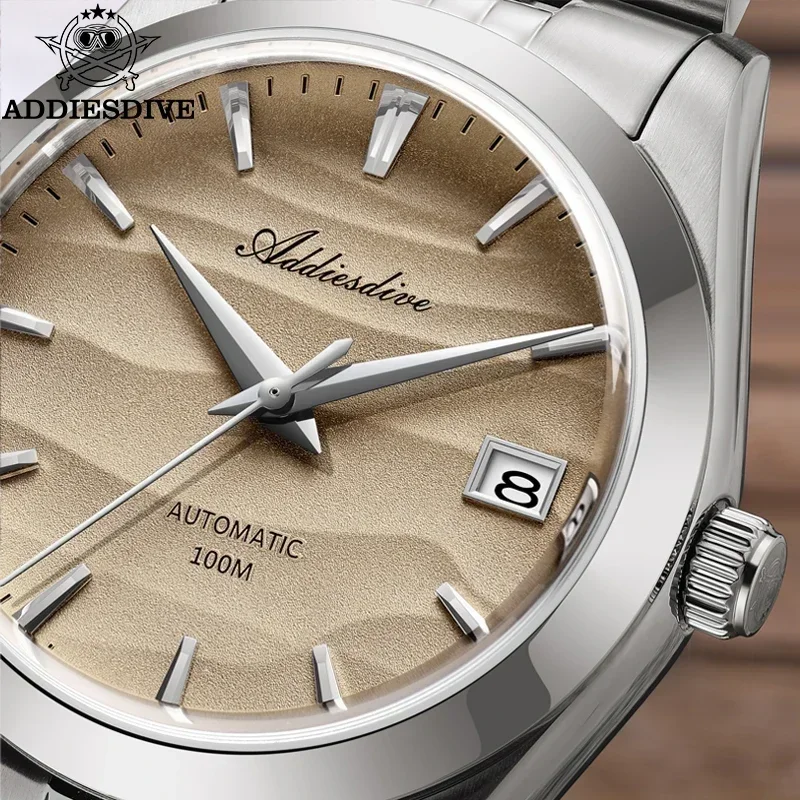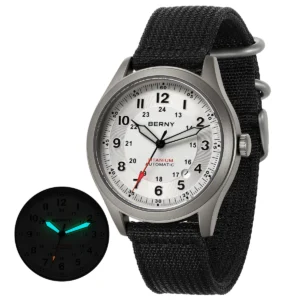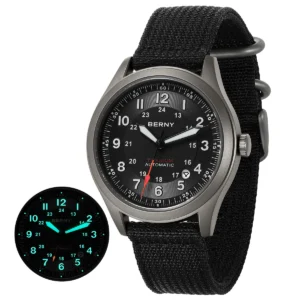Understanding Tachymeter Scales: The Aviator’s Essential Timekeeping Tool
A tachymeter scale is one of the most distinctive yet often misunderstood features on pilot watches. These specialized markings, typically arranged around the bezel or on the outer edge of the dial, allow pilots to perform quick speed calculations without complex mathematics – a critical ability when navigating at high altitudes.
At its core, a tachymeter works on a simple principle: it helps measure how long it takes to travel a fixed distance, then converts that time into a speed. The scale operates on the mathematical relationship where Speed = 3600/Time in seconds. This formula allows pilots to calculate their velocity with remarkable simplicity:
- The scale typically ranges from 60 to 500 or 1000 units
- Each marking corresponds to “events per hour” (commonly speed in miles or kilometers per hour)
- Lower numbers on the scale represent slower speeds; higher numbers represent faster speeds
For pilots specifically, this function proved invaluable when traditional flight instruments were limited or failed. For example, if a pilot timed themselves covering 1 nautical mile in exactly 30 seconds, the tachymeter reading would show 120 – indicating a groundspeed of 120 knots.
What makes tachymeters particularly valuable in aviation is how they bridge the gap between timing and navigation. In an environment where being off-course by just a few degrees can lead to significant position errors over time, the ability to verify actual groundspeed became a fundamental piloting skill that complemented the development of various history dive watch engineering techniques that eventually made their way into aviation timepieces.
The Mechanics Behind the Scale: How Pilots Read Speed at a Glance
The true genius of tachymeter scales lies in their ability to transform a relatively complex mathematical calculation into a simple reading that pilots can interpret instantly. Understanding how these scales work reveals the elegant solution they provide for aviators.
The physical layout of a tachymeter follows a non-linear scale, with graduations becoming progressively closer together as the values increase. This design accommodates the inverse relationship between time and speed – the longer an event takes, the slower the calculated speed. Most aviation tachymeters include these key components:
- Chronograph (stopwatch) functionality to measure elapsed time
- A precisely calibrated tachymeter scale, typically marked from 60 to 500
- Clear, high-contrast markings for instant readability in varying light conditions
- Integration with the watch’s bezel or chapter ring for durability and usability
To operate the tachymeter effectively, pilots follow this procedure:
- Identify a known distance (such as between two landmarks or navigation points)
- Start the chronograph when passing the first point
- Stop the chronograph when reaching the second point
- Read the tachymeter value where the chronograph hand points
The beauty of this system is its flexibility – pilots can use any consistent distance unit (miles, kilometers, or nautical miles), and the tachymeter will calculate the appropriate speed in that same unit per hour.
However, tachymeters do have limitations. They’re typically most accurate for events lasting between 7 and 60 seconds. For very fast speeds (events under 7 seconds), the markings become too compressed for accurate readings. For very slow speeds (events over 60 seconds), the chronograph might need to be reset and mathematical adjustments applied.
Many modern automatic pilot watches preserve this functionality even as digital technologies have superseded mechanical calculations in modern cockpits.
Navigating the Skies: Historical Applications in Early Aviation
Before the advent of GPS, radar, and sophisticated flight computers, pilots relied on a combination of visual references, paper charts, and mechanical instruments like tachymeters to navigate safely through the skies. The golden age of aviation (1920s-1950s) saw tachymeter-equipped watches become essential tools for aviators worldwide.
In the era of dead reckoning navigation – calculating position by estimating speed and direction from a known starting point – pilots faced significant challenges:
- Wind drift could dramatically affect groundspeed and course
- Visual landmarks could be obscured by clouds or darkness
- Fuel reserves provided limited margins for navigational errors
- Radio navigation aids were limited or nonexistent in many regions
Tachymeters addressed these challenges by providing a reliable method to verify groundspeed using visual references. Pilots would:
- Identify two landmarks with a known distance between them
- Time how long it took to travel between these points
- Use the tachymeter to instantly calculate their actual groundspeed
- Compare this to their planned speed to adjust navigation calculations
Famous aviators like Charles Lindbergh and Amelia Earhart relied on precise timing and speed calculations during their historic flights. The ability to accurately determine groundspeed meant the difference between reaching their destination or becoming hopelessly lost over featureless oceans or terrain.
Watch manufacturers recognized the critical importance of this function and developed specialized pilot watches with enhanced legibility, robust construction, and precise chronograph mechanisms. These early aviation timepieces established design standards that continue to influence the evolution pilot watches cockpit icons even today.
Calculating True Groundspeed: The Pilot’s Tactical Advantage
Understanding the distinction between airspeed and groundspeed is crucial to appreciating why tachymeters became so vital to aviators. Airspeed – what aircraft instruments display – measures how fast the aircraft moves through the air mass. Groundspeed, however, measures actual progress over the ground, which can differ significantly due to wind effects.
This difference creates a fundamental challenge: an aircraft might be flying at 120 knots airspeed, but facing a 30-knot headwind, resulting in only 90 knots groundspeed. Without knowing true groundspeed:
- Estimated time of arrival calculations would be off by 25%
- Fuel planning would be dangerously inadequate
- Navigation plotting would show incorrect positions
- Diversions or emergency planning would be compromised
Tachymeters gave pilots a tactical advantage by providing an independent method to verify actual groundspeed. Using visual checkpoints with known distances, pilots could:
- Identify their actual speed over the ground
- Calculate wind effect by comparing with indicated airspeed
- Apply corrections to their navigation calculations
- Make informed decisions about fuel management
For example, if a pilot expected to cover a 10-mile leg in 5 minutes (120 knots) but the tachymeter showed a groundspeed of only 90 knots after timing the leg, they would immediately recognize they were fighting stronger headwinds than anticipated. This would prompt recalculation of their fuel requirements and estimated arrival time – potentially a life-saving adjustment.
This capability made chronograph pilot watches with tachymeters essential equipment for serious aviators who needed to maintain precise situational awareness throughout their flights.
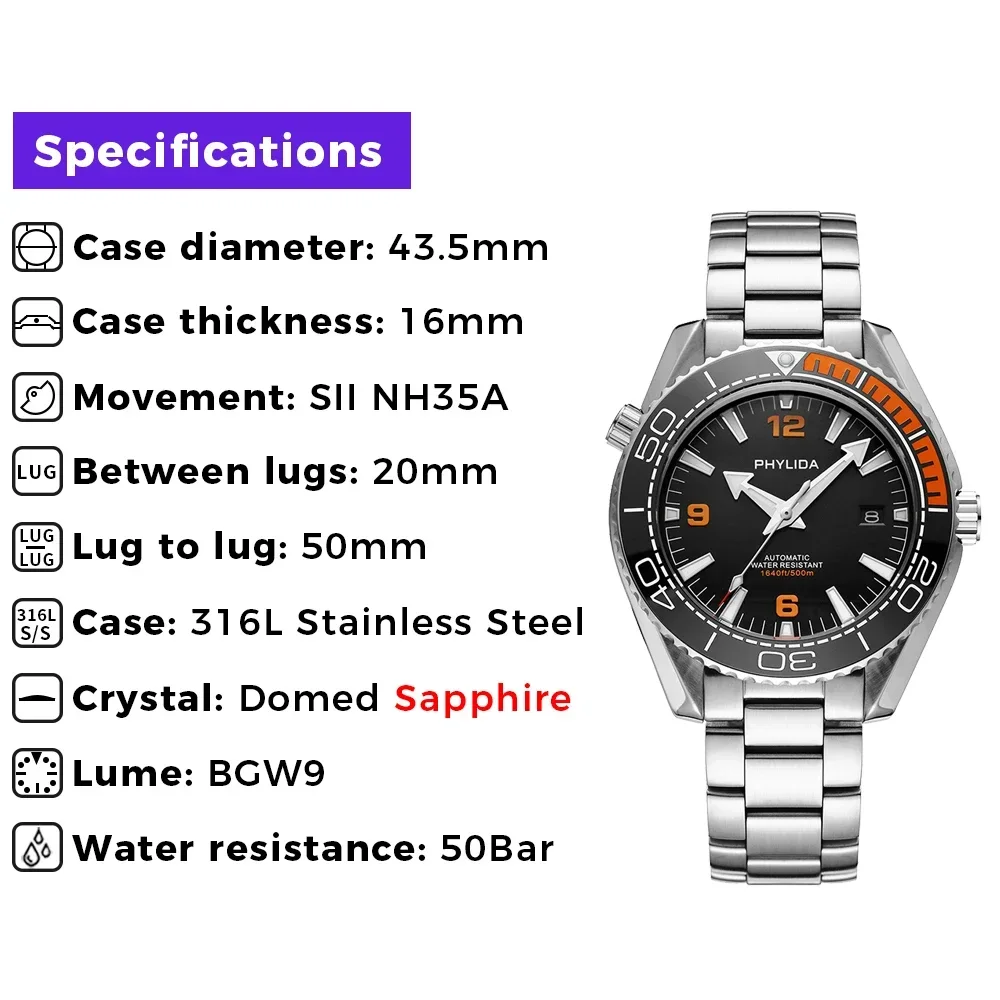
Step-by-Step: Using a Tachymeter for Air Navigation
Implementing tachymeter calculations in actual flight requires methodical technique to ensure accuracy. Here’s a detailed walkthrough of how pilots historically used these specialized watch scales to navigate:
Pre-flight Preparation
– Identify prominent landmarks on the chart that are easily recognizable from the air
– Measure and note the precise distance between these landmarks
– Consider how these points align with the planned routeLandmark Identification
– Visually confirm the first landmark from the aircraft
– Prepare the chronograph function on the watch
– Ensure clear visibility of the second landmarkTiming Execution
– Start the chronograph precisely when passing directly over the first landmark
– Maintain steady heading and altitude between points for maximum accuracy
– Stop the chronograph exactly when passing over the second landmarkReading and Interpretation
– Observe where the chronograph hand points on the tachymeter scale
– Read the corresponding speed value directly (no calculations needed)
– Note this value as your current groundspeedNavigation Application
– Compare the measured groundspeed with planned groundspeed
– Calculate new estimated time of arrival for subsequent waypoints
– Determine wind direction and speed by comparing with indicated airspeed
For example, a pilot flying between two water towers exactly 5 miles apart might time the journey at 2 minutes and 30 seconds. Looking at the chronograph hand’s position on the tachymeter scale would show approximately 24. Since this reading represents “units per hour,” multiplying by the distance factor (5) gives 120 mph groundspeed.
This technique remained remarkably accurate when performed correctly, which explains why classic pilot watches with tachymeter functionality continue to be valued by aviation enthusiasts long after electronic navigation systems have become standard.
Fuel Management and Flight Planning with Tachymeter Calculations
Beyond navigation, tachymeters played a crucial role in fuel management – perhaps the most critical safety consideration in aviation. With limited fuel capacity and few diversion options, especially over remote areas or oceans, pilots needed precise consumption calculations to ensure they could reach their destination safely.
The relationship between speed and fuel consumption is fundamental to flight planning:
- Aircraft burn fuel at different rates depending on their speed
- Headwinds reduce groundspeed, increasing flight time and total fuel used
- Tailwinds increase groundspeed, reducing flight time and fuel requirements
- Reserve fuel requirements typically demand precision in these calculations
Using tachymeter readings, pilots could make real-time adjustments to their fuel planning:
- If groundspeed was lower than planned, they might need to reduce power settings to conserve fuel
- If groundspeed was higher than anticipated, they might have extra fuel for contingencies
- Accurate groundspeed measurements allowed for precise fuel remaining calculations at any point
For example, if a pilot calculated a 5-hour flight with 7 hours of fuel onboard, but tachymeter readings showed their groundspeed was 20% slower than planned, they would immediately know their 2-hour fuel reserve had essentially disappeared. This would prompt immediate decisions about diverting to an alternate destination or changing altitude to find better winds.
The engineering principles behind precise fuel management systems share many similarities with advancements seen in the timeline diving watch innovations, where accuracy under challenging conditions became paramount to safety.
Beyond Basic Speed: Advanced Tachymeter Applications for Pilots
While speed calculation was the primary function of tachymeters, experienced pilots developed additional techniques that expanded their utility in the cockpit. These advanced applications demonstrated the versatility of this seemingly simple scale.
Rate of Climb/Descent Calculation
By timing how long it takes to climb or descend a specific altitude (typically 1,000 feet), pilots could use the tachymeter to determine their vertical speed in feet per minute:
– Start the chronograph at a reference altitude
– Stop it after climbing/descending 1,000 feet
– Read the tachymeter scale and multiply by 1,000
– The result shows feet per hour; divide by 60 for feet per minute
Distance Estimation
When speed was known but distance uncertain, pilots could reverse the tachymeter calculation:
– Set the chronograph to measure elapsed time
– Start timing when passing a reference point
– Stop timing after traveling for a predetermined period (typically 1 minute)
– Calculate distance by dividing speed by the tachymeter reading
Fuel Flow Monitoring
Pilots could verify fuel consumption rates:
– Time how long it takes to burn a specific quantity of fuel (e.g., 10 gallons)
– Read the tachymeter scale to determine gallons per hour consumption
These advanced techniques made tachymeter-equipped watches particularly valuable for pilots operating specialized aircraft like those with GMT pilot watches that offered additional timing functions for cross-timezone operations.

Iconic Pilot Watches: Tachymeters that Made Aviation History
Throughout aviation history, certain watch models became legendary for their tachymeter functionality and reliability in the cockpit. These timepieces didn’t merely tell time – they actively contributed to flight safety through their specialized design features.
The most influential tachymeter-equipped pilot watches typically featured:
- High-contrast dials with luminous hands and markers for readability in all conditions
- Oversized crowns and pushers that could be operated while wearing flying gloves
- Robust cases that could withstand rapid pressure changes and vibration
- Anti-magnetic protection to maintain accuracy near aircraft instruments
- Precise chronograph movements with smooth start/stop/reset functionality
Design innovations like rotating bezels with tachymeter scales allowed pilots to perform additional timing functions or “freeze” specific calculations for reference. Some manufacturers developed specialized scales optimized specifically for aviation applications rather than automotive use.
These technical requirements pushed watchmakers to develop new manufacturing techniques and materials, contributing significantly to the overall advancement of wristwatch technology. The standards established for pilot watches influenced developments across the entire industry.
The history of these specialized instruments parallels the broader developments covered in the birth of aviation timepieces, where function consistently drove form in the pursuit of reliability under challenging conditions.
Modern Relevance: Tachymeters in Today’s Cockpit
In today’s world of glass cockpits and GPS navigation, the practical necessity of tachymeter calculations has diminished – yet these scales remain prominent features on many pilot watches. This seeming contradiction reflects both their heritage value and continued practical utility in certain situations.
Modern applications for tachymeter-equipped watches in aviation include:
- Backup capabilities during electronics failures or power emergencies
- Training environments where fundamental skills remain important
- Recreational flying in vintage aircraft with limited instrumentation
- Verification of electronic instrument readings as a cross-check
- Special operations where electronic emissions may need to be limited
Professional pilots recognize that understanding manual calculation methods enhances overall situational awareness, even when using advanced systems. The ability to perform basic navigation and timing functions without dependency on electrical systems represents a safety mindset that defines aviation culture.
Many automatic chronograph watches continue to incorporate tachymeter scales not only as a nod to heritage but as functional tools that might still prove valuable in certain circumstances. The reliability of mechanical systems that require no batteries or external power remains a compelling advantage in emergency situations.
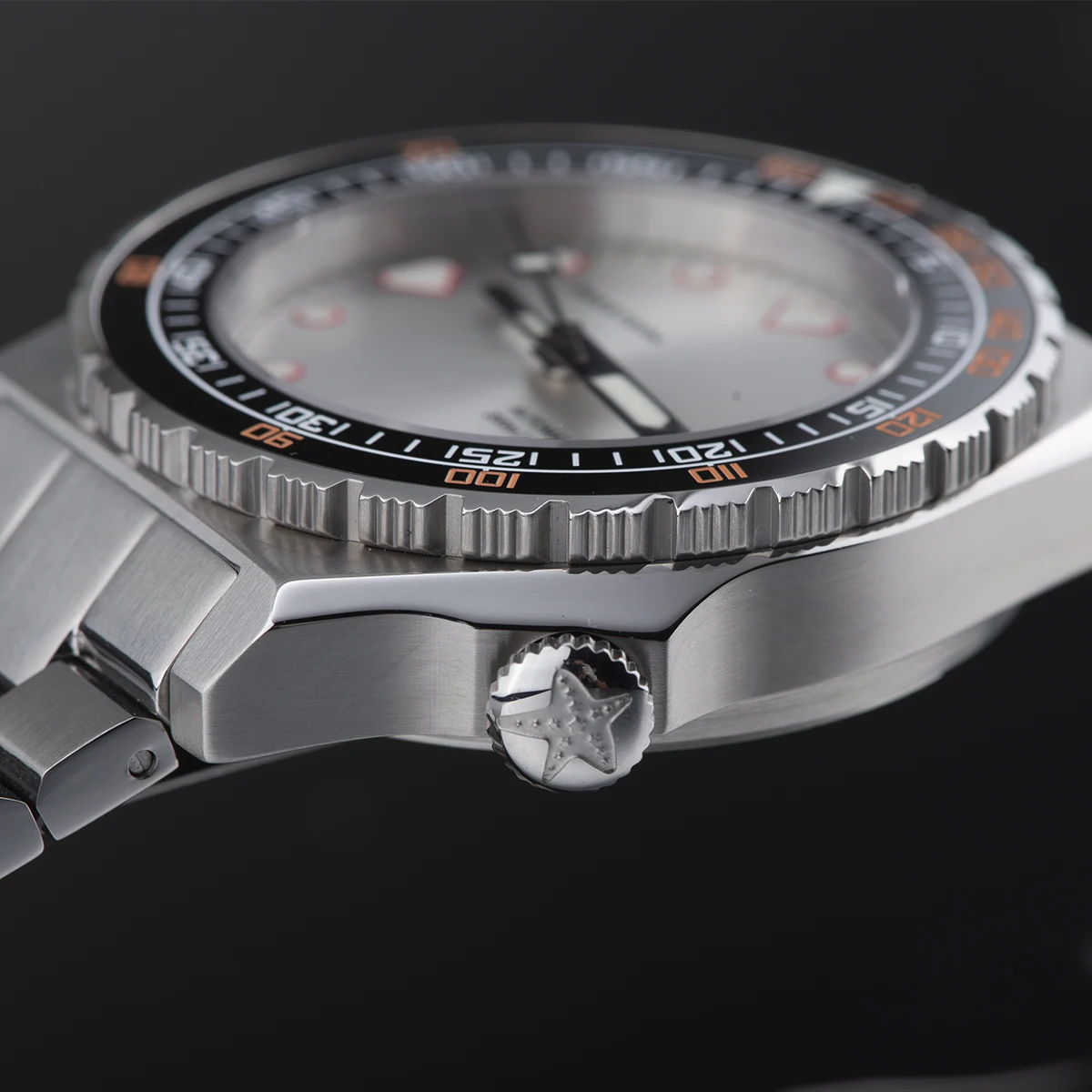
Automatic Chronograph Watches, Chronograph Pilot Watches
Price range: $233.36 through $237.58 Select options This product has multiple variants. The options may be chosen on the product pageClassic Automatic Dress Watches, GMT Automatic Watches, GMT Pilot Watches
Price range: $1,240.86 through $1,463.33 Select options This product has multiple variants. The options may be chosen on the product pageAutomatic Chronograph Watches, Classic Style Dive Watches
$3,053.06 Select options This product has multiple variants. The options may be chosen on the product pageClassic Pilot Watches, Military Inspired Automatic Watches
$561.00 Select options This product has multiple variants. The options may be chosen on the product pageClassic Field Watches, Classic Pilot Watches, Rugged Automatic Watches, Titanium Automatic Watches
Price range: $425.24 through $496.28 Select options This product has multiple variants. The options may be chosen on the product pageClassic Field Watches, Classic Pilot Watches, Military Inspired Automatic Watches, Titanium Automatic Watches
Price range: $425.24 through $496.28 Select options This product has multiple variants. The options may be chosen on the product page
Tachymeters Beyond Aviation: Versatile Applications of a Pilot’s Tool
The mathematical principles behind tachymeters extend far beyond the aviation world. The same ability to convert time intervals into rates has proven valuable across numerous fields:
In motorsports, drivers and teams use tachymeters to measure lap speeds and sector performance without complex calculations. Production managers in manufacturing settings can determine production rates by timing how long it takes to complete specific quantities of products. Medical professionals may use similar principles to monitor patient vitals like respiration or pulse rates.
Even in everyday scenarios, the principles behind tachymeters offer practical applications:
- Calculating average speed during fitness activities
- Determining flow rates in plumbing or irrigation
- Measuring productivity rates in repetitive tasks
- Estimating travel times based on current speeds
The universal nature of rate calculations explains why this seemingly specialized pilot tool has maintained relevance across diverse disciplines. The aviation origin of these techniques demonstrates how solutions developed for the challenging environment of flight often find applications far beyond their original purpose.
Heritage and Craftsmanship: Why Pilot Watches Still Feature Tachymeters
Despite the reduced practical necessity in modern aviation, tachymeter scales continue to feature prominently on pilot watches – speaking to their important place in horological heritage and design language.
The presence of a tachymeter on contemporary pilot watches represents:
- A connection to aviation history and traditional navigation methods
- The skill and craftsmanship required to create precise circular scales
- An aesthetic element that visually identifies the watch as part of pilot heritage
- A functional complication that differentiates professional timepieces
Watch enthusiasts appreciate not just the potential utility but the mechanical symphony required to integrate chronograph functions with tachymeter scales. The execution of these features – from precise markings to smooth operating pushers – demonstrates a manufacturer’s technical capabilities and attention to detail.
For modern aviation enthusiasts, these watches connect them to the golden age of flight when pilots relied on mechanical ingenuity rather than electronic displays. The tachymeter scale stands as a testament to how clever engineering solved complex problems through elegant mechanical solutions – a philosophy that continues to define quality watchmaking at Sharp Aspect and throughout the industry.

